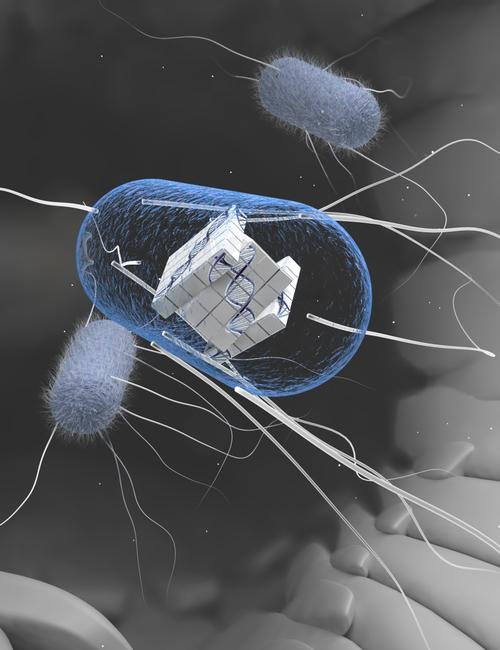Synthetic, 'Smart' Cells Can Remember, Respond to Events 26780
In a step forward for synthetic biology, researchers at MIT have programmed cells that can remember and respond to a series of events. The work allows for the engineering of cells within the human body that can sense disease and respond appropriately, as well as other next-generation medical applications.
August 1, 2016
The cells, developed by a team led by MIT Professor Timothy Lu, can remember, in correct order, up to three different inputs. However, the approach should scale to incorporate many more stimuli, researchers said. Lu is associate professor of electrical engineering and computer science and of biological engineering, and head of the Synthetic Biology Group at MIT’s Research Laboratory of Electronics.
The system will allow scientists to track cellular events that occur in a particular order, create environmental sensors that store complex histories, or program cellular trajectories. The new system builds upon work by Lu and his team in 2013 to design cell circuits that could perform a logic function and then store a memory of the event by encoding it in their DNA.

Researchers at MIT have programmed cells that can remember and respond to a series of events. “You can build very complex computing systems if you integrate the element of memory together with computation,” said Timothy Lu, an associate professor of electrical engineering and computer science and of biological engineering, and head of the Synthetic Biology Group at MIT’s Research Laboratory of Electronics. Lu led the research, which opens doors to cell engineering within the human body to sense and respond appropriately to disease.
(Source: Research Laboratory of Electronics, MIT)
“In this case, our research was largely driven by a desire to go beyond combinational logic circuits that have no memory associated with them, and move into a more generalized computational paradigm known as state machines,” Lu explained to Design News in an interview. “State machines have memory and are capable of performing sequential logic. For example, a state machine can process whether it receives input A before B or input B before A, whereas combinational circuits cannot do this because they have no memory of past events.”
With the recombinase state machines that Lu and his team implemented in bacteria, they could record which chemical stimuli appeared in the cell and in what order they appeared, he said. Recombinases are the type of genetic recombination enzymes on which the system is based.
“This information was written in the cell’s DNA and was retrieved by sequencing, polymerase chain reaction, and/or fluorescent reporting,” Lu explained. “We were also able to program cellular phenotypes based on this information by using our state machines to alter gene expression.”
In a medical application, the systems the team used to drive recombinase activity will be replaced by biosensors that detect relevant signals for the particular application, as the system’s current inducers are just proof-of-concept molecules, he added. “The system is flexible so that the input sensors can be swapped to respond to other chemical signals or biological events,” Lu said.
Such applications might be in disease detection and instantaneous treatment within the body using the engineered cells, he said. “We are interested in engineering cells to sense disease in the human body and respond by making therapeutics on demand, in the right place, at the right time,” Lu said.
READ MORE ARTICLES ON MEDICAL APPLICATIONS:
For example, an engineered probiotic bacteria could detect where toxic molecules or disease exist in a person’s gastrointestinal tract based on the succession of signals it detects as it transits down their gut, triggering the production of therapeutics such as anti-inflammatory molecules when disease biomarkers like inflammation are sensed, he said.
“If we could implement these state-machines devices in stem cells, then our improved understanding of the temporal organization of signaling molecules and transcription factors that play a role in stem-cell differentiation would contribute significantly to our ability to create cells for regenerative medicine,” Lu said. “Similarly, if we could implement these state-machine devices in disease models, then our improved understanding of the role of extracellular and intracellular factors in determining disease progression could help us develop novel, targeted therapeutics.”
Elizabeth Montalbano is a freelance writer who has written about technology and culture for more than 15 years. She has lived and worked as a professional journalist in Phoenix, San Francisco, and New York City. In her free time she enjoys surfing, traveling, music, yoga, and cooking. She currently resides in a village on the southwest coast of Portugal.
About the Author(s)
You May Also Like



